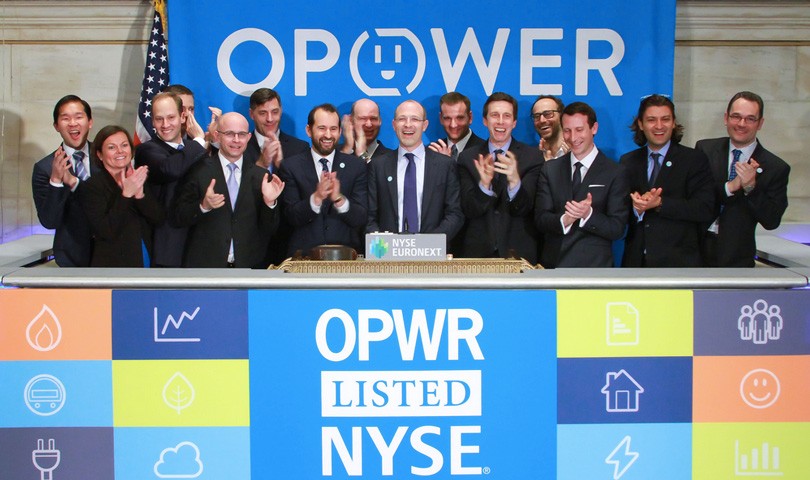Startup to IPO: How Opower's Talent Strategy Transformed through Growth
“It was incredible. I probably won’t ever experience anything like it ever again. To see seven years of hard work come together like that: it was an insanely fun day.”
That’s Dawn Mitchell, Head of Talent Acquisition at Opower, talking about the company’s IPO on April 4, 2014.
Aside from parties in every office, complete with champagne spraying stations, the day was a real turning point for Opower.
Going from a startup to a publicly traded company inevitably changed the corporate culture, including its recruiting operation.
At Talent Connect San Francisco 2014, Dawn shared the company’s journey.
Pre-IPO: A culture of recruiting
“Opower was founded off of referrals,” explains Dawn. “Our founders built the executive team from their networks, and then those executives built their teams off of their networks.”
“It was made very clear from the CEO on down that recruiting was always our #1 priority, and that referrals in particular would be how we’d scale. We talked about recruiting and referrals at every company meeting.”
The company also held “Talent Tuesdays” every month, in which its employees spent the afternoon eating a catered lunch and actively searching their LinkedIn networks for top talent. (See how Mulesoft uses hire-a-thons to boost referrals too.)
In preparation for the IPO, Opower:
1. Grew its recruiting team from nine to 27:
Opower’s leadership expected the company to grow from 400 to 800 employees. After looking at past recruiter capacity and what it took to make the hires, they anticipated the spots we were going to grow in and came up with the number 27.
“If we could do it over again though, we would have supplemented some of those 27 full-time recruiters with contractors,” says Dawn. “We ended up scaling from 400 to 600 employees instead of 800: it’s still a tremendous amount, but growing from 9 to 27 recruiters was probably too aggressive.”
2. Hired recruiting specialists:
Opower wanted recruiters who knew how to operate in a publicly traded company and who had expertise in areas such as sales and engineering. “The business was making a shift in whom it was hiring, and these specialists brought in a level of credibility with hiring managers that we just didn’t have before,” explains Dawn. “They were integral in decreasing our time to fill in key areas.”
3. Adopted a structured approach to interviewing.
“In startup mode, whomever was around the office would conduct interviews,” explains Dawn, “But that wasn’t going to work as we scaled. Plus we needed to give managers a tool to interview for the new type of specialist talent we were after.”
Dawn’s team infused two elements from the Who method for hiring to conduct more consistent and purposeful interviews:
- A scorecard. Like an advanced job description, the scorecard addresses the desired outcomes of the role, and the necessary qualities needed to achieve those outcomes.
- Topgrading. This is a structured 1.5 hour-long interview that asks a consistent set of questions about work style and history.
For sales talent specifically, the team also created a case study for candidates to give them a sense of a typical situation with customers, and to evaluate how they would give the Opower pitch.
4. Added a sourcing team.
The team wanted to build a pipeline for the next wave of hiring to help shorten our time to fill, so they decided to add a sourcing function.
“But, we were still a somewhat volatile business, and our needs were constantly shifting,” says Dawn. “We ended up using the sourcers for very tough-to-fill roles, often pulling them in last-minute. It was very frustrating for them and they didn’t have the impact we wanted. If we had to do it over again, we’d put more support around them,”
5. Established an employer brand role.
“We knew we’d get a ton of buzz and press around the IPO, so we wanted someone to capitalize on that and build a presence for us from an employer branding perspective,” Dawn explained.
Here’s an example of a video targeted at sales talent:
Since the recruiting team was completely bogged down, Dawn and team found it was helpful to have someone dedicated to managing their brand. As a result, their Twitter, Facebook, and LinkedIn followers grew exponentially during that time.
“Now that things have calmed down and we know where we want to invest, we are building a more robust employer brand strategy, including our employee value proposition,” Dawn explains. “Since we’re a very different company now compared to pre-IPO, we need to put messaging around that for our employees as well as for our recruiters.”
6. Focused on analytics:
Having someone on the team who was really passionate about metrics and this helped them start tracking their successes and failures, and have more data-driven conversations with the business.
The team did evaluations in such areas as:
- Sales compensation. The team started recruiting enterprise software sales talent, but their compensation didn’t match the market. By working with the internal compensation team and Sales Operations, they were able to do an evaluation in order to get a more on-target earning model.
- Past hires. Dawn and team analyzed wins and misses, and the companies from which the most and least successful employees came.
- New talent markets. While OPower was in startup mode, a lot of the core roles were based out of headquarters. “But a sales team, for example, needs to be regionalized, and this was the first time we were going to do that,” says Dawn. “We needed to expand into areas we hadn’t touched before so we had to evaluate those markets.”
Now that they have baseline analytics, the team plans to start understanding patterns over time, particularly where they have very high time to fills. “A key part of that growth is our new ATS, Greenhouse, where we can customize workflows by group and really dive into key metrics,” Dawn explains.
Want to hear more? Catch Dawn’s full video presentation from Talent Connect San Francisco.
*image source: gigaom
Topics: Small business Recruiting tips
Related articles





